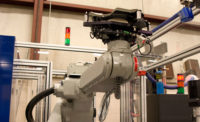The job titles in a meatpacking plant — chuck boner, tender puller, back splitter, knuckle dropper, tail ripper — sound like professional wrestling moves. But they are all essential components of the meat processing system.
As other industries become more automated, U.S. meatpacking plants still depend on worker skills for cutting, deboning and trimming.
“To be profitable, companies move a tremendous amount of product through every day,” says Davey Griffin, Ph.D., professor and meat extension specialist at Texas A&M University, based in College Station, Texas.
Certainly, U.S. beef and pork plants have grown larger compared with their European counterparts.
“Cattle keeps getting bigger, as well, so there are more opportunities to look at more muscle separations and different cuts to satisfy consumers,” says Griffin.
That’s where butchers excel: skilled knife work to make more cuts, seam muscles and trim fat.
Finding the best cutting technique
Muscle profiling studies have targeted muscles for a variety of applications. A beef carcass is capable of 56 cuts of meat, after all.
In the past, carcasses used to be run through a saw for big cuts, says Griffin, but now the cuts are smaller and often follow the muscle seams, which requires more skilled knife work.
To separate the joint of meat, seam butchery techniques involve cutting along the natural seams.
“More is being done back up the chain, so the larger guys aren’t sending big cuts to stores anymore but doing them at the plant,” Griffin says.
Larger plants are upgrading their equipment or using mechanical aids to eliminate repetitive worker motions such as grabbing meat, he says.
Three-dimensional imaging and laser beams can saw evenly through meat to create sirloins, for example, that are of equal weight.
Circular knives also help reduce the repetitive motions associated with trimming pork, says Griffin.
In addition, hydraulic and pneumatic devices are being employed to make meat processing more efficient and less physically demanding, which should help with worker retention and ergonomic issues like carpal tunnel syndrome, says Griffin.
Water-jet cutting has been around for decades, but is being used more frequently today — and with greater precision and safety — to trim beef and pork, says Dale Woerner, Ph.D., associate professor of meat safety & quality, Colorado State University, Fort Collins, Colo.
This method is also being used to trim the bone on rib-eye steaks, he says.
“Different cutting techniques work for different processes — use the best cutting technique for what you are doing,” says Gary McMurray, division chief, Food Processing Technology Division, Georgia Tech Research Institute in Atlanta.
For example, water jets also work well for cutting chicken breast fillets, but can’t penetrate the bird skeleton for shoulder cuts, he says.
“Rotary blades cut easily too but can’t discriminate between bone and meat; so static knives usually work the best for many applications,” McMurray says.
Automating cuts
High-level automation currently exists for lamb processing in Australia.
“There’s been a lot of talk of using robotics for deboning carcasses and making primal and subprimal cuts, but there haven’t been a lot of successes with beef because the uniformity of the animals — size, shape and composition — is not comparable to other animals,” Woerner says.
Processors are looking at automation to save wear and tear on their human labor — avoiding work-related injuries caused by long-term repetitive movements — not necessarily for speed, Woerner says.
“The use of laser-guided technology and robotics is the most feasible for breaking carcasses, such as with an automatic saw,” Woerner says. “Our industry would like to get there with automation, but there is not a lot of robotic implementation in beef.”
Adopting new technologies
Compared with beef, poultry is much more suitable for automatic processing systems. The product is smaller, more uniform and there are higher quantities to be slaughtered every day.
Last year, Georgia Tech Research Institute (GTRI) licensed its robotic Yield Scan Rapid Frame Analyzer, which collects and monitors meat yields in poultry cone line operations, to Gainco Inc.
“Processors want real time data on yield and technology to provide more answers,” says McMurray. “A lot of companies have come to use robotics as a solution for yield, worker safety concerns and worker availability.”
However, automation still faces challenges in poultry because it’s an unstructured process: birds are wet, slippery and have different size specifications.
“Sensors can improve the slaughter process by identifying, locating and completing the necessary action,” says McMurray.
Robots still don’t come cheap. But the cost of technology in robotics has dramatically decreased in the last five years.
“Right now, a processor could buy a darn good robotic arm on the market for $25,000 — although not rated for food — which could probably be modified for food,” says McMurray. “There’s no way a company could build their own robotic arm for the same amount.”
Deep learning, for example, has also helped companies make strides with processing large amounts of data recently, he says.
“It’s a machine learning method that utilizes lots of data to help machines make lots of decisions,” McMurray says. “So if equipment is trying to identify the chicken breast, for example, the machine is shown thousands of pictures of parts that are labeled good or bad. The machine then learns an algorithm to help it make decisions very robustly.”
More companies are adopting new technologies from research companies, McMurray says.
“There’s more interest in technology than we’ve ever seen before,” he says. “I don’t think we’ll ever have a completely automated processing facility for poultry, but I can envision an integrated, real-time data process with robotic cells and distribution systems to optimize output.” NP





Report Abusive Comment